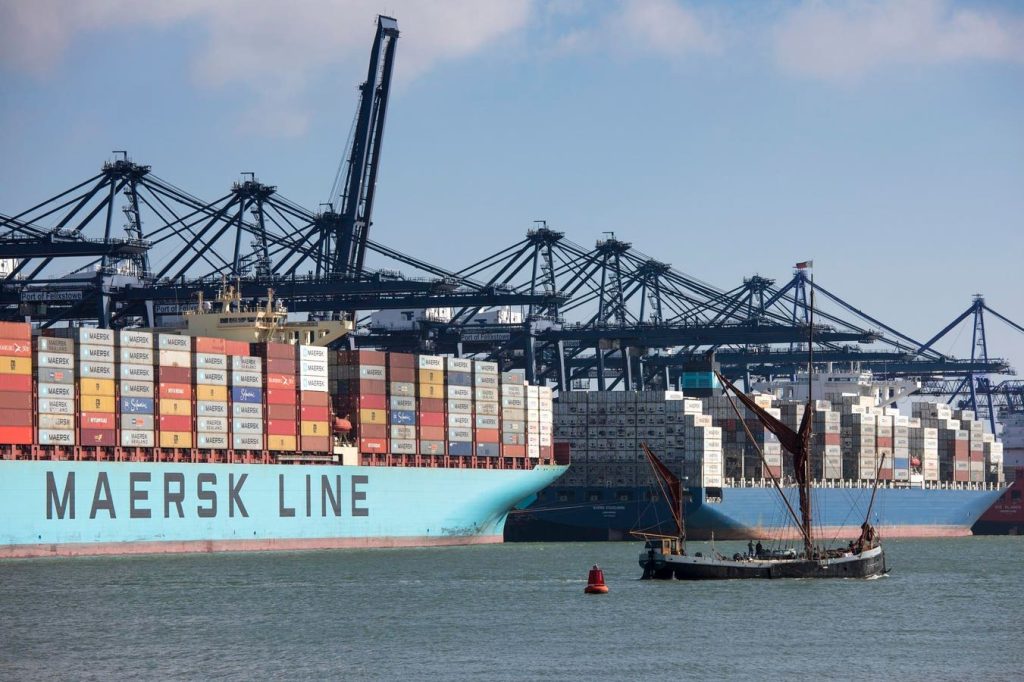FELIXSTOWE, UNITED KINGDOM – JULY 31: Foreign container ships docked at Port of Felixstowe on July … More
Just as things were starting to return to today’s normal, Donald Trump announced on Truth Social a 50% tariff on EU countries, starting June 1. And then he decided that iPhones should carry a “Tariff of at least 25%” until the entire product is “manufactured and built” in the U.S.
The impact was a drop in the values of the S&P 500, Dow Jones Industrial Average, Nasdaq, and the Russell 2000 stock indexes. The dollar dropped compared to other major currencies. The VIX, a measure of volatility, jumped, as did the price of gold, as might be expected at a time when investors are worried about the future. Between April 2 (Trump called it “Liberation Day”) and May 23, 2025, the yield of the 10-year Treasury moved from 4.127% to 4.518%, a nearly 9.5% jump. That’s a bigger increase than what happened immediately after April 2, which was already a bad sign. One of the main stated economic aims of the Trump administration has been lowering, not raising, yields on the 10-year.
Investors and markets are concerned because no one can count on what is going to happen even a month or two out. That is true in the U.S. and globally. It likely will mean higher inflation and could lead to an economic slowdown here, with consumers pressed by the cost of living and increasing debt and companies ultimately pressured by lower sales and margins.
Trump blamed what he called a “totally unacceptable” trade deficit and discussions that were “going nowhere” because the EU had been “very difficult to deal with.” It is unclear how grounded his reasons were. One was a complaint about VAT taxes, which are national equivalents of sales taxes and apply to virtually everything being bought and sold. His term “ridiculous Corporate Penalties” could be another name for what the U.S. government regularly imposes on domestic and foreign companies for allegedly illegal actions.
He and his administration likely do know some of this is overreach, but such a post typically is constructed to generate broader emotional support for an action. Unfortunately, popular support isn’t enough at this point. What the country needs economically, for the good of everyone, is a different approach to strategy and negotiation.
Trump comes from a particular place and time: commercial real estate in New York City during the 1970s, 80s, and 90s. He has portrayed himself as a mogul and has a history of using hardcore negotiation strategies, demonstrated at least in part by a reported 3,500 lawsuits over 45 years, as the ABA Journal from the American Bar Association noted in an interview with James Zirin, a former federal prosecutor and author of the 2019 book Plaintiff in Chief: A Portrait of Donald Trump in 3,500 Lawsuits. That’s an average of 1.5 lawsuits a week over that period.
“He sued at the drop of a hat,” Zirin wrote. “He sued for sport; he sued to achieve control; and he sued to make a point. He sued as a means of destroying or silencing those who crossed him.”
What works in the close confines of the U.S. court system, where it might be possible to overwhelm or wear out an opponent, isn’t useful when opposing the largest geopolitical powers in the world. According to TSL Research Group Limited, the action was “brinkmanship”
There would be an impact on the EU economy, but also on the U.S. The Financial Times found European Commission figures showing that 20% of the EU’s export, a portion worth about $602.3 billion in 2024, all go to the U.S. Instead of $602.3 billion, a similar amount would cost $903.5 billion. That’s almost a trillion dollars.
Importers are responsible for the tariffs. The additional $301.2 billion have to be covered by someone. EU exporters might swallow some, and U.S. importers could lower their margins, but a big chunk ultimately will come out of the pockets of consumers. As the money goes to the government, it’s a tax.
That means more upward pressure on inflation. It could easily slow consumer spending and the U.S. GDP. The move could be the sort of trigger of a recession.
Assuming things proceed as they’re now expected to. For now.

